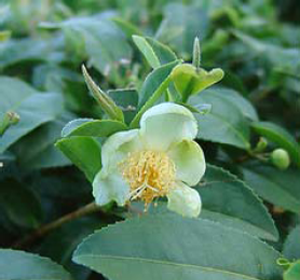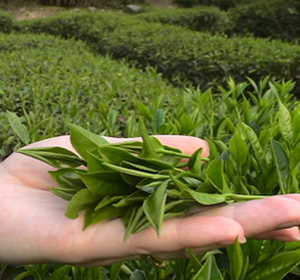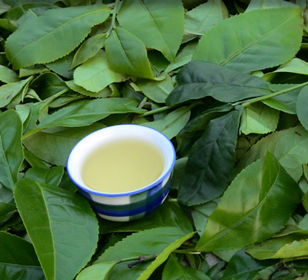The world of tea
Tea (THEA SINENSIS o CAMELIA SINENSIS) is an evergreen plant of the Camellia family. Botanists recognize two very similar varieties: Chinese, Assam, and the Cambodian subspecies, all used for commercial production.
 |
Camellia Sinensis, in its Chinese variety, can reach a height of 3 to 4.5 meters and is widespread throughout China, Tibet and Japan. It tolerates low temperatures, producing leaves of about 6 cm in length and can live up to 100 years. Camellia Assamica is more a tree than a bush and can reach a height of 13 meters, with leaves of about 15 cm in length. This variety thrives in tropical climates and has a productive life of about 40 years. The subspecies most used for the production of hybrids (crosses between different varieties) is the Cambodian Camellia (Camellia assamica, lasiocalix subspecies), which can also grow to a height of up to 4.5 metres. |
 |
Camellia Sinensis has glossy, leathery, dark green leaves with small white flowers 2 cm in diameter, with five to seven petals, similar to jasmine flowers. The fruit it produces (not used for production of tea) is similar to nutmeg and contains from one to three seeds. The ideal habitat for the tea tree is in a warm and humid climate, with temperatures from 10°C to 30°C and at altitudes of 300m to 2000m above sea level. Altitude and humidity are the two variables that determine the growth of the plant, with better results at high levels. Most of the best known teas are grown at high elevations, such as Ceylon and the best Indian Darjeeling teas, which usually grow in plantations located at altitudes of over 1200 metres. |
Camelia Sinensis
 |
The tea plant, in plantations, is usually pruned to maintain its shrub form, with a greater ability to constantly produce new buds. From the outset the ""pruning"" is designed to give the top of the plant a flat shape: this will make it easier to grow new buds, which represent one of the fundamental aspects of the various harvests. Tea is like a fine wine or a good oil, i.e. the taste and quality of the final product depends on many factors, such as climate, soil, altitude, weather conditions, the method of harvesting and handling, mixing, packaging, transport and storage. Tea plantations are usually called gardens, especially in India, in the areas of Darjeeling and Assam, where there is a very important distinction that determines the value of the tea based on the garden of origin. |
The thousand names of tea
 |
Before the English word “tea” came about, the leaves had a variety of different names: tcha, cha, tay and tee. The English name does not come from the Mandarin Chinese, Tcha, but from the Amoy dialect, te, assimilated during the first contacts between the Chinese and Dutch traders in the port of Amoy in the Fujian province. That name became “thee” in Dutch, and the Dutch having been the first to import tea to Europe, it then became “tee” in German. In Spanish, Italian, Danish, Norwegian, Swedish and Hungarian it is written “té”, in English “tea”, in French “thé”, in Finnish “tee”, in Latvian “teja”, in Korean “ta”, in Tamil “tey”, in Sinhala “thay” and in scientific language “thea”. The Mandarin “cha” became “ch'a” in Cantonese and was translated into Portuguese as “cha” (at the time of Portuguese trade with the Cantonese-speaking city of Macao) and then into Persian, Japanese and Hindi, becoming “shai” in Arabic, “ja” in Tibetan, “chay” in Turkish and “chai” in Russian. |








